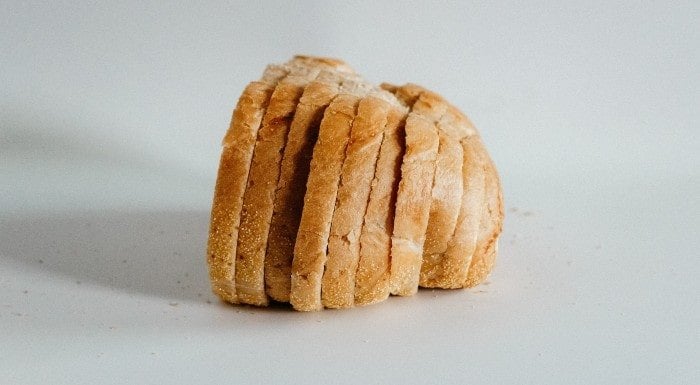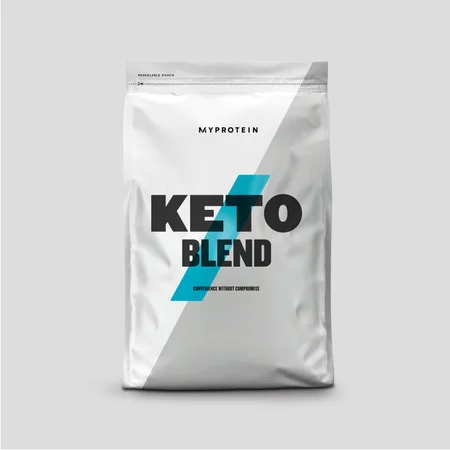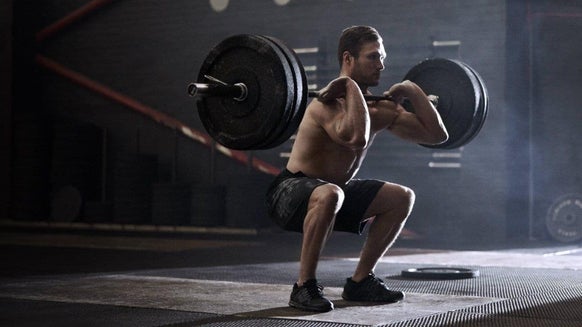Is a Low Carb Diet the Best for Weight Loss?

Low-carb diets for weight loss have been the backbone of the weight-loss industry for a long time now. It usually involves severely cutting carbs, and often eating more fats. This typically includes cutting out foods like sweets, pasta, and bread. Often times this leads to weight loss, however sometimes it doesn't. This article will answer your low-carb questions to figure out if this is the best diet to help you reach your goals.
- What do carbs do?
- What is a low-carb diet?
- Should you cut carbs for weight loss?
- Low-carb diet vs. Low-fat diet for fat loss
- How do low-carb diets work?
- Benefits of a low-carb diet
- Risks of a low-carb diet
- Popular low-carb diets
- Effects of low-carb intake on exercise
- Diet plan and tips
- Why your low-carb diet might not be working

What do carbs do?
Carbohydrates are the body’s primary fuel source. They break down into energy for our brain, lungs, muscles, and other cells. They’re especially crucial for high-intensity exercise, when we push our muscles to the max. Carbs travel through our bloodstream after digestion (known as “blood sugar”). Our body produces insulin, which directs the sugar to the cells for energy or for storage (when we get more than we need).
What is a low-carb diet?
A low-carb diet is exactly what it says on the tin. You cut your carbohydrates down to make up a much smaller proportion of your daily macronutrients (protein, carbohydrates, and fats). This can include foods such as fruit depending on how strict the low-carb diet is. The idea is that by cutting out carbs, you’ll be cutting out excess calories.
Should you cut carbs for weight loss?
Carbs can stunt weight loss if you tend to eat a significantly higher proportion of them in comparison to your other macronutrients, but carbs aren’t inherently “bad”.
When weight loss is your goal, it’s necessary to achieve a calorie deficit, which means you’re burning more calories than you are eating. Because carbs are typically the most abundant macronutrient in many of the foods we eat, cutting out high carb foods is one easy way to lower your total calorie intake when trying to achieve a deficit.
Many research studies have proven that low-carb diets can work because they simply reduce total calorie intake.1 However, both low-carb/high-fat diets and low-fat/high-carb diets can all be equally successful, as long as they both reduce total calorie intake.2

Low-carb diet vs. Low-fat diet for fat loss
Although you probably have friends and family members who swear by one approach or the other, the science shows that they can be equally effective for weight loss, as long as you burn more calories than you consume from food.2
Low-fat diets have been popular for a long time, as fat is higher in calories (9 per gram) than carbohydrates or protein (4 per gram). Because high-fat foods are typically high in calories (fried foods, oils, etc.),so reducing intake of these foods is an easy way to reduce overall calorie intake. Low-fat diets are also regarded as being more heart-healthy, as they’re lower in cholesterol and saturated fats.
While carbs are lower in calories per gram than fat, portions of carb-rich foods are usually large and easy to overconsume since they aren’t as filling and satisfying as higher fat or protein foods. Fat slows down digestion and keeps food in your stomach longer, sending signals of fullness to your brain. Protein acts in a similar way to make you feel full and satisfied, which is why people following a high-fat, high-protein, low-carb diet can be successful in reducing total caloric intake.
How do low-carb diets work?
Carbs are the main source of glucose, which is the basic fuel for the brain (and the rest of the body) runs on. When carbs are kept to a minimum in your diet, your body needs to find alternative energy sources and starts to break down fat for energy instead.
Typically, you consume more protein and fat when you reduce the carbs in your diet. Depending on the specific type of diet you’re following, you might eliminate fruit and starchy vegetables or just eat them in smaller portions, less often. Eliminating fruit entirely isn’t a good idea (unless advised and supervised by a doctor) because they contain important micronutrients and fibre.
Benefits of a low-carb diet
Struggle to stick to that diet? Studies have shown that a low-carb diet reduces your appetite. It’s thought that because you’re eating more protein and fats, you fill up quicker, but still end up eating less calories.3
You’re also likely to lose more weight than on other diets to begin with. That’s because your body work to get rid of that excess water from your body, meaning bigger losses in the first week or two.4
There’s also an increase in good HDL cholesterol on a low-carb diet as it encourages you to eat more healthy fats to replace some of the calories you’re not eating from carbs.5
Risks of a low-carb diet
Popular low-carb diets
Keto
The Keto diet emphasises a high fat, very low (or no) carb eating pattern. When your body isn’t getting any carbohydrates (and not too much protein) from food, it starts to break down fat stores for energy — a process called ketosis. This process produces ketones, which are an alternative source of energy for your brain to use instead of glucose.
Staying in this metabolic ketosis state can be difficult, as your body will switch back to burning glucose when you do consume too many carbs. Also, all of that fat you’re eating will be stored if you switch back to carbs (which can sabotage your weight loss). Although this diet is very popular and can lead to fast results, it can be difficult for some people to stick to long term.
Atkins Diet
The Atkins Diet is another popular low-carb eating pattern that focuses on high-protein and high-fat foods, but it’s split in to “phases” that help you slowly reintroduce certain “healthy” carbohydrates in small portions once you attain the weight loss you desire. It’s less strict than the Keto diet and does allow some carbohydrates eventually, whereas the Keto diet eliminates them to keep the body in the fat-burning state.
South Beach Diet
Similar to the Atkins Diet, the South Beach Diet is a low carb eating plan that’s broken into phases that slowly reintroduce a low level of carbohydrates for long-term maintenance. The main difference from the Atkins or Keto diet is that it emphasises low-fat meats and heart-healthy fats.
The effects of a low-carb intake on exercise
While a low-carb diet can be an easy choice for losing weight, how does it impact performance when our muscles depend on it for energy? Refuelling after a workout should be focused on two things — replenishing glycogen in the muscles (the stored form of carbohydrate) and protein for repair and growth. After an intense workout, our muscles are depleted of their energy stores (called glycogen), and rely on carbs from our diet to rebuild those stores before we exercise again.
Two key factors for athletes to consider are the total carb intake for the day and the timing of their carbohydrates.6 It’s crucial to consume easily digested carbohydrates soon after a challenging workout to help your body recover and rebuild stores of glycogen. While some people can train well on a low-carb diet, others might experience a drop in performance if they’re used to having more carbs and suddenly cut them out.6
Some athletes practice “carb cycling” for performance. This means alternating days of higher carb intake with days of lower carb intake, planned around your workouts and recovery periods. This is one way to try a lower carb eating pattern while still fuelling your body for more intense workouts when necessary. Although it follows the principles of a low-carb diet while also considering the need for glucose for recovery, there’s limited scientific evidence or guidelines published on carb cycling. It may take some trial and error to get an alternating low carb/high carb eating pattern to yield the results you’re looking for.
Diet plan and tips
What to eat on a low-carb meal plan
Meat, eggs, chicken, turkey, fish, green vegetables, nuts, seeds.
Dairy products (milk, yogurt), beans, some gluten free grains (quinoa, millet), some fruits, certain starchy vegetables (peas, sweet potatoes)
Foods a low-carb diet avoids:
Sugary foods (desserts, baked goods, soda, juices), pastas, breads, rice, noodles, potatoes, corn, cereals, low fat “diet” foods (often high in carbs).
Fruits with high water content (berries, watermelon, grapefruit) Meats, eggs, and cheeses High protein/low sugar yogurt Nuts and seeds Vegetables with hummus
Low-carb diet meal plan
Depending on the type of low-carb diet plan you choose to follow, you may include, exclude, or limit any of the moderate carb foods as well. Here are three low-carb examples for each meal of the day (and snacks).
Omelette with cheese, diced peppers and onions Cottage cheese with peanut butter Scrambled eggs with spinach and bacon
Turkey or ham and cheese roll-ups and cucumbers Spiralled courgette noodles (or spaghetti squash) with alfredo sauce and coleslaw Tuna salad with mayo on baby greens
Grilled chicken with sautéed mushrooms and asparagus Salmon, cauliflower “rice” and stir-fry veggies Bacon cheeseburger (no bun) with roasted vegetables
Celery with peanut butter Tomatoes with mozzarella cheese, topped with olive oil and balsamic vinegar - Kale chips with mashed avocado
Why your low-carb diet might not be working
Been eating barely any carbs and still not seeing much progress? Just because you’ve cut carbs doesn’t mean you’ll automatically lose weight. If you’re replacing the calories lost from the lack of carbs with more protein or fat, then you could end up putting on weight instead of losing it.
To lose weight, you need to be in a calorie deficit, which means eating fewer calories than you burn in a day. So, if you cut out 100 kcal of carbs, but then replace that with 100 kcal of protein, then you won’t be in a calorie deficit and lose weight.
For a low-carb diet to succeed, you need to cut down your carbs, but not eat those extra calories from other food groups.
Take home message

Claire is a Registered Dietitian through the Academy of Nutrition and Dietetics and a board-certified Health and Wellness Coach through the International Consortium for Health and Wellness Coaching. She has a Bachelor of Science in Biology and a Master’s degree in Clinical Dietetics and Nutrition from the University of Pittsburgh.
Talking and writing about food and fitness is at the heart of Claire’s ethos as she loves to use her experience to help others meet their health and wellness goals.
Claire is also a certified indoor cycling instructor and loves the mental and physical boost she gets from regular runs and yoga classes. When she’s not keeping fit herself, she’s cheering on her hometown’s sports teams in Pittsburgh, or cooking for her family in the kitchen.
Find out more about Claire’s experience here.







